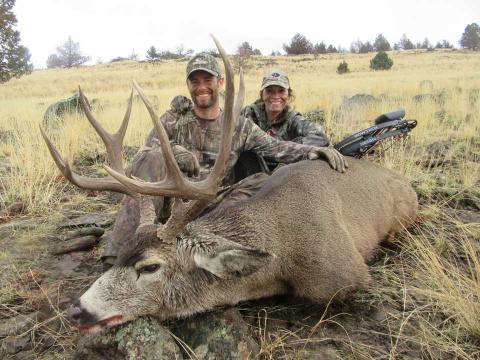Chris Bush | The Speckled Truth

Nature continues to evolve and throughout modern history humans have done the same. Fishing is no different. From primitive angling methods, literally rooted in our ancestry, to newer digital components enclosed in titanium frames, a once basic survival skill now closely resembles our tech savvy world despite the surroundings.
One of the fisheries most impacted is redfish.
Redfish, or red drum, for those that aren’t aware, are the benchmark inshore species along many coastal states. Ranging anywhere from 6 to 60 inches, their seemingly always hungry demeanor, typically yields plenty of bent rods earmarked by strong bulldoggish runs and stripping drag. Yet, despite their consistent reaction to a perfectly presented offering, fishermen, in their approach, provide the evolutionary transition to targeting them – sight fishing being the most prominent.
The Higher The Better
Two decades ago, Flip Pallot, in his show Walkers Cay Chronicles introduced the sight fishing stand to the modern market. On his little technical poling skiff, eloquent lines of a presented fly, back dropped by a turquoise sky, seared its way onto film. Flip, or his guest, would stand atop an 18-inch perch on the bow, while the guide stood higher slightly above the motor with a 20-foot push pole pointing to unsuspecting predators along the Florida flats. Now that once simple modification has transformed into towering stands. Fishermen, no longer satisfied with the visibility offered by smaller products, have had stands in excess of 8-feet tall custom fabricated onto their shallow drafting boats. The idea for this new age of angler is every foot you go higher, you increase your width of visibility by a 2-foot radius. Additionally, old platforms only offered ample space for one fisherman. Now, some newer stands conform to the lines of the boat and provide a platform large enough for potentially up to three anglers. So a once 4-foot radius by a single angler has evolved to a team of highly equipped fishermen rapidly picking apart a flat 16 feet at a time. In other words, efficiency equals more time in high potential water by quickly eliminating non-productive areas.
Productive Vs. Non Productive
Suitable redfish habitat is very versatile. For most anglers, finding industrial structure like pilings or concrete substrate is prime real estate, but if sight fishing is what you’re after ,finding duck ponds, bayous or drains laced with grass can be very productive - especially with the presence of tide and bait. By targeting this “smaller water” anglers typically increase visibility due to the lack in environmental variations like wind or tide. Additionally, the presence of grass offers a natural filter which collects debris throughout the water column and also offers safe haven for smaller crustaceans and finfish. Aside from putting in the effort on the water, many of these areas can be found at the swipe of a fingertip. Digital mapping platforms like Google Earth offer great aerial insight to an area unlike paper charts and outdated topographic maps. This new-age way of “scouting” has consolidated the vast playing field to a 5-inch screen that fixates urban society. Areas once guarded by Mangroves or Spartina Fields are now available to all anglers with a 6-inch jackplate and inquisitive mind. No longer are fishable waters hidden. Instead, redfish wait for those who know what to look for and often reward an angler’s offering with a gill flare.
Bass Tackle Equals Redfish Tackle
Redfish, as the name would suggest, are far from red. In fact, their streamlined bodies take on a more copper hue and, depending on water color, morph into a bright orange or a sandy silver. Their most notable feature though is the typical standalone dot near their tail. However, on a perfectly presented bait no other characteristic is as pronounced as their gills. An instantaneous white flash lends wonder to the volume of water rushing around your offering. Now gone, the only thing left to do is set the hook, keep the rod tip up and hold on.
Truth be told, redfish eat everything. As aforementioned, their aggressive nature is what makes them fond across all coastal states. Better yet, the equipment required by anglers relates across fisheries. If you bass fish, you have everything you need to redfish and vice versa. Having said that, there are lures that are better performers.
First, most 3 to 4-inch swimbaits on an exposed jighead provide the most versatility. Even though profiles vary across the brand spectrum, it’s really soft plastic color that’s the more important feature. Depending on water color, darker profiles like Morning Glory (Black and Chartreuse) or Texas Roach (Black Back/Gold Belly and Chartreuse Tail) outperform clearer choices like Opening Night (Clear with a Purple Hue). For situations when grass can be a factor, a ¼-ounce Tungsten peg weighted to a 3/0 Heavy Wire Wide Gap Hook Texas Rigged on Crawfish imitation soft plastic can be super productive. Not only does this allow you to fish heavy cover, but it imitates the tiny crabs often littering the flats. Other lures that are highly productive are crankbaits, spinnerbaits and gold spoons.
Gear also transcends across the fisheries. High speed reels (8.1:1 or 7.3:1) and Medium to Medium Heavy Action rods are ideal purely due to their quickness upon hookset and power exhibited throughout the fight. Having the right equipment not only leads to less angler fatigue, it prevents less fish fatigue as well. The angler can now fight the fish with greater efficiency, preventing fish exhaustion before a hopeful release after a successfully landed fish.
So as cooler temperatures prevail in our outdoor environment, evolve your game regardless of your obsession. However, if sight fishing for redfish is one of those, be sure to elevate your status and take advantage of the evolution of our angling adaptations – the redfish will reward your transition.






























